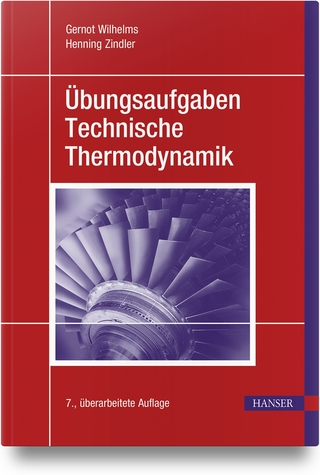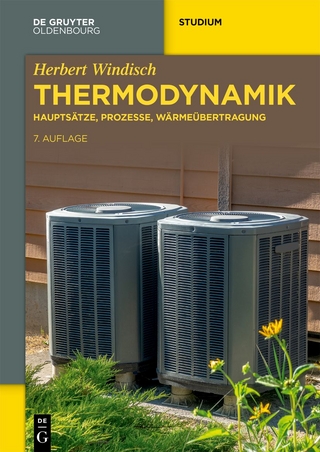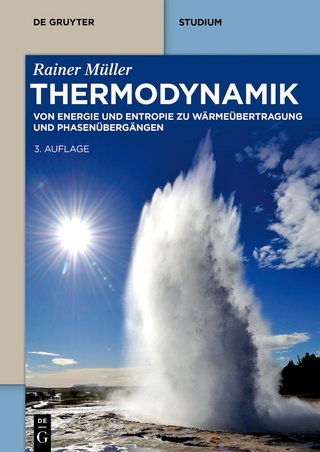Superplasticity
Springer-Verlag Berlin and Heidelberg GmbH & Co. K
978-3-540-10038-6 (ISBN)
Lese- und Medienproben
- Titel ist leider vergriffen;
keine Neuauflage - Artikel merken
Following the general position analysis of materials in the present world as given in volume 1, now volume 2 focuses on a special topic: It provides a thorough treatment of theoretical, experimental, and applied aspects of superplasticity.
1. Historical Introduction.- 1.1 First Observations of Structural Superplasticity.- 1.2 Early Observations of Environmental Superplasticity.- 1.3 The Revival of Interest in Structural Superplasticity.- 2. The Mechanics of Superplastic Deformation and the Assessment of Superplastic Behaviour.- 2.1 The Tensile Test.- 2.2 Constitutive Relations for Superplastic Materials.- 2.3 The Deformation Behaviour of Superplastic Materials.- 2.3.1 The tensile stress-strain curve.- 2.3.2 Tensile stress-strain rate variations.- 2.3.3 Compressive behaviour.- 2.3.4 Torsion testing.- 2.4 The Shape of the Deforming Specimen.- 2.5 Plastic Instability.- 2.5.1 The onset of necking.- 2.5.2 The geometry of neck formation.- 2.6 The Elongations of Rate-Sensitive Materials.- 2.7 The Strain-rate Sensitivity Index, m.- 2.7.1 Determination of m from the $${/sigma _t} - {/dot /varepsilon _t}$$ curve.- 2.7.2 Determination of m using change in strainrate method.- 2.7.3 Determination of m from stress-relaxation tests.- 2.7.4 Comparison of m values determined using different techniques.- 2.7.5 The physical significance of m value measurements.- 2.8 Strain-rate Sensitivity in Environmentally Superplastic Materials.- 2.9 Other Test Procedures for Studying Structural Superplasticity.- 2.9.1 Indentation tests.- 2.9.2 Measurement of internal stresses.- 2.9.3 Measurement of grain boundary shear.- 2.9.4 Damping characteristics.- 2.9.5 Miscellaneous tests.- 3 Structural Superplasticity - Experimental.- 3.1 The Mechanical Properties.- 3.1.1 Characteristics of deformation.- 3.1.2 Necessary conditions.- 3.1.3 Variables of deformation.- (a) Strain-rate.- (b) Strain.- (c) Strain-rate sensitivity index.- (d) Temperature.- 3.1.4 The influence of prior treatments and compositional variations.- 3.1.5 Elongation.- 3.1.6 Macroscopic characteristics: an assessment.- 3.2 Microstructural Studies.- 3.2.1 Qualitative metallography.- (a) Surface studies.- (b) Internal structure.- (c) P.Iarker experiments.- (d) Dynamic experiments.- 3.2.2 Quantitative metallography.- (a) Grain boundary sliding.- (b) Measurements of grain size and shape.- (c) Analysis of texture.- 3.2.3 Assessment of metallographic and topological features.- 3.3 Fracture.- 3.3.1 Macroscopic aspects.- 3.3.2 Microscopic aspects.- 3.3.3 Origin of cavitation.- (a) Phenomenological.- (b) Microstructural.- 4. Structural Superplasticity - Theoretical.- 4.1 Early Theories.- 4.2 Modern Theories.- 4.2.1 Rheological theories.- 4.2.2 Activation energy for superplastic flow.- 4.2.3 Atomistic theories.- (a) Diffusional flow mechanisms.- (b) Dislocation creep theories.- (c) Grain boundary deformation models.- (d) Multi-mechanisms.- 5. Environmental Superplasticity.- 5.1 Experimental Results.- 5.1.1 Macroscopic characteristics.- (a) Transformational plasticity.- (b) Temperature cycling.- (c) Neutron irradiation.- 5.1.2 Metallographic features.- 5.2 Theoretical Studies.- 5.2.1 Phenomenological approaches.- 5.2.2 Mechanistic models.- 5.2.3 Cavitation.- 6. Applications of Superplasticity.- 6.1 Forming Operations.- 6.1.1 Hydraulic bulging.- 6.1.2 Sheet thermoforming.- 6.1.3 Blow moulding.- 6.1.4 Deep drawing.- 6.1.5 Punch stretching.- 6.1.6. Forging and stamping.- 6.1.7 Extrusion.- 6.1.8 Dieless drawing.- 6.1.9 Powder metallurgy processes.- 6.2 Theoretical Analyses of Superplastic Forming Processes.- 6.2.1 Analysis of hydraulic bulging.- 6.2.2 Analysis of bulging into a 90 V-groove.- 6.2.3 Analysis of extrusion.- 6.2.4 Regression analyses.- 6.3. Practical Developments.- 6.3.1 Alloys.- 6.3.2 Design considerations.- 6.3.3 Tooling.- References.- Author Index.
| Reihe/Serie | Materials Research and Engineering |
|---|---|
| Zusatzinfo | biography |
| Verlagsort | Berlin |
| Sprache | englisch |
| Gewicht | 740 g |
| Themenwelt | Naturwissenschaften ► Physik / Astronomie ► Thermodynamik |
| Technik ► Maschinenbau | |
| ISBN-10 | 3-540-10038-5 / 3540100385 |
| ISBN-13 | 978-3-540-10038-6 / 9783540100386 |
| Zustand | Neuware |
| Informationen gemäß Produktsicherheitsverordnung (GPSR) | |
| Haben Sie eine Frage zum Produkt? |
aus dem Bereich



